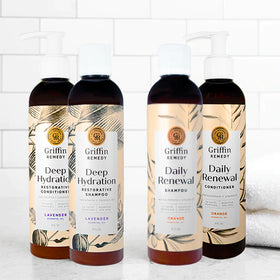
Vitamin D: Why It’s Not Always Easy to Get Enough
New research shows that vitamin D, and specifically D3, might help lower your risk of developing severe COVID-19 symptoms.
Humans evolved spending most of their time outside in a sunny environment. Today, however, we’ve become largely indoor mammals that usually cover up when we venture outside. Even when we sit on a beach, we usually slather ourselves with sunscreen. That lack of sun exposure means that our bodies synthesize less vitamin D than our distant ancestors did, a condition that’s led to widespread vitamin D deficiencies in modern humans.
Your Body Is Crying Out for More Vitamin D
If you want to know how much our bodies crave vitamin D, just take a look at how hard they work to replenish it. People who are extremely deficient in vitamin D (less than 12 ng/mL) respond rapidly to sun exposure, and their serum levels rise extremely quickly. People who are marginally deficient (30-50 ng/mL) achieve optimal levels (50-80 ng/mL) more slowly. This is evidence that we need to maintain a minimal level to be fit.
One exception to this rapid repletion is people who are obese. It’s very difficult to get obese people “up to speed” with vitamin D, because, as a fat-soluble vitamin, D “hides” in the fatty tissues. In order to build up enough, some people require very high-dose supplementation—20,000 or more IU daily as prescribed by a doctor. While that seems like a lot, it’s sometimes necessary for repletion, which is important because this vitamin plays many crucial roles in the body.
Vitamin D May Help Lessen COVID-19 Symptoms—and Much More
Several studies have shown that a deficiency in vitamin D can increase your odds of catching the flu. Now researchers from Northwestern University have discovered a link between patients with severe COVID-19 symptoms and low levels of vitamin D. So it’s more important than ever to make sure you’re getting enough of this critical vitamin.
The list of benefits just goes on: Vitamin D is very important for bone density—equally, if not more so, than calcium. Research also shows that vitamin D3 can help slow the progress of various autoimmune diseases, including multiple sclerosis. There’s also evidence that lupus outcomes are improved with adequate serum vitamin D levels. Additionally, vitamin D has been shown to improve asthma, especially in patients who don’t do well with inhalers. It can also improve depression, anxiety, and chronic pain, including arthritis and back pain.
Possibly the most interesting tidbit about vitamin D, however, is its effect on telomeres—the protective caps on the ends of our chromosomes. Every time a cell replicates, and the DNA divides, a little bit of the telomere tip is lost, leading inexorably to aging. But studies have shown that vitamin D can help lengthen telomeres, thus slowing the aging process by helping extend telomere life.
Where Is Vitamin D Found?
Maintaining optimum vitamin D levels, then, is key to good health and long life. But that’s not always easy. In addition to lack of sun exposure, modern humans also tend to be vitamin D deficient because we also don’t consume enough in our daily diets. In fact, the best natural sources of vitamin D are foods that many of us don’t eat at all—fish livers and other organ meats. Plus, our culture tends to be extremely fat phobic, which means we’re consciously avoiding even more chances to obtain this fat-based vitamin.
Today, most physicians are tuned into the problem, so ask your doctor to check your vitamin D levels and let your doctor suggest a daily vitamin D dosage based on that. For general health, 2,000–5,000 IU daily is safe. Speaking of supplements: cholecalciferol, or vitamin D3, is what you want. Don’t be fooled into taking D2, the vegetarian form, also known as ergocalciferol—it is far more expensive and doesn’t work as well as vitamin D3.
For optimal absorption, always take your vitamin D supplement with fat—a spoonful of full-fat yogurt, or anything containing eggs, meat, or olive oil, for example. And make sure that your vitamin D supplement is oily. Dry D doesn’t work as well. Store vitamin D supplements away from light, heat, and humidity, and only buy products with an expiration date to ensure you are getting a fresh supplement.
Can You Get Vitamin D Through the Window?
You can boost your vitamin D levels by getting about 15–20 minutes of sun exposure daily—make sure to avoid applying sunscreen to some part of your body (e.g., your arms). Sitting by a window won’t cut it, unfortunately. Most glass blocks UVB rays, which are responsible for vitamin D production.




